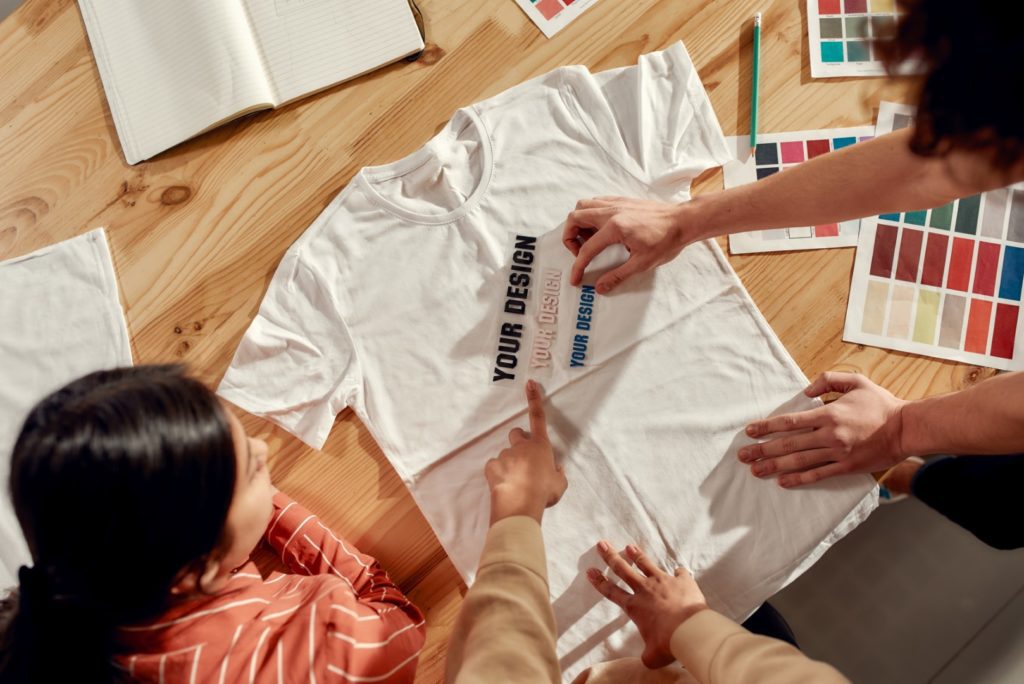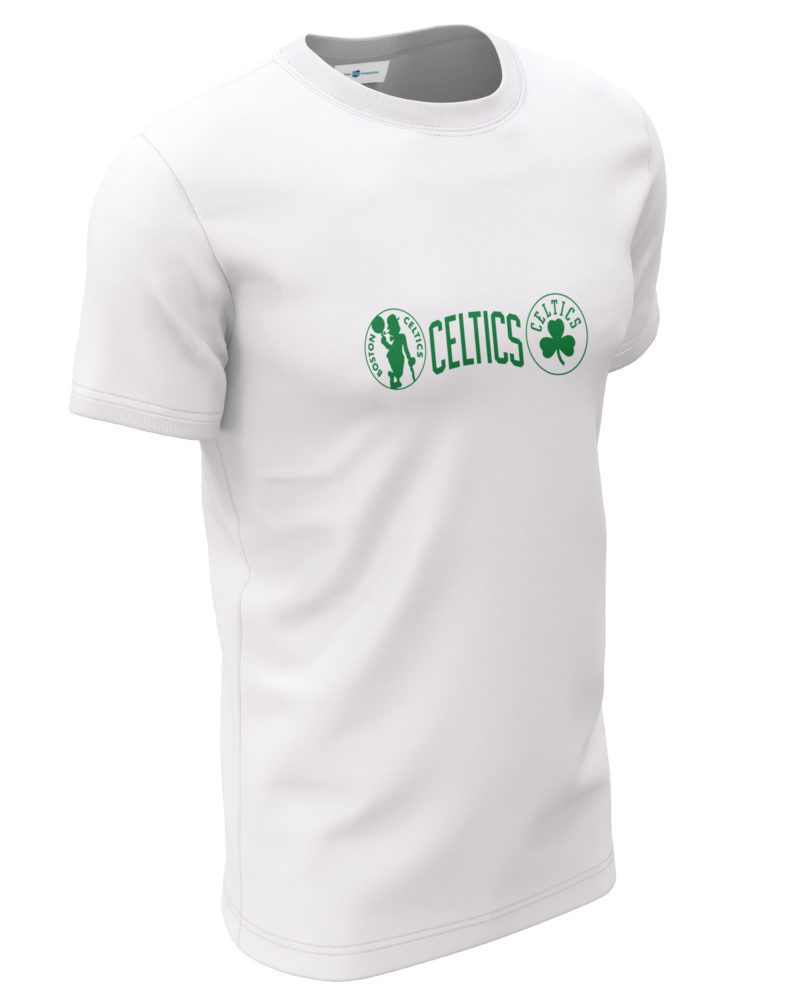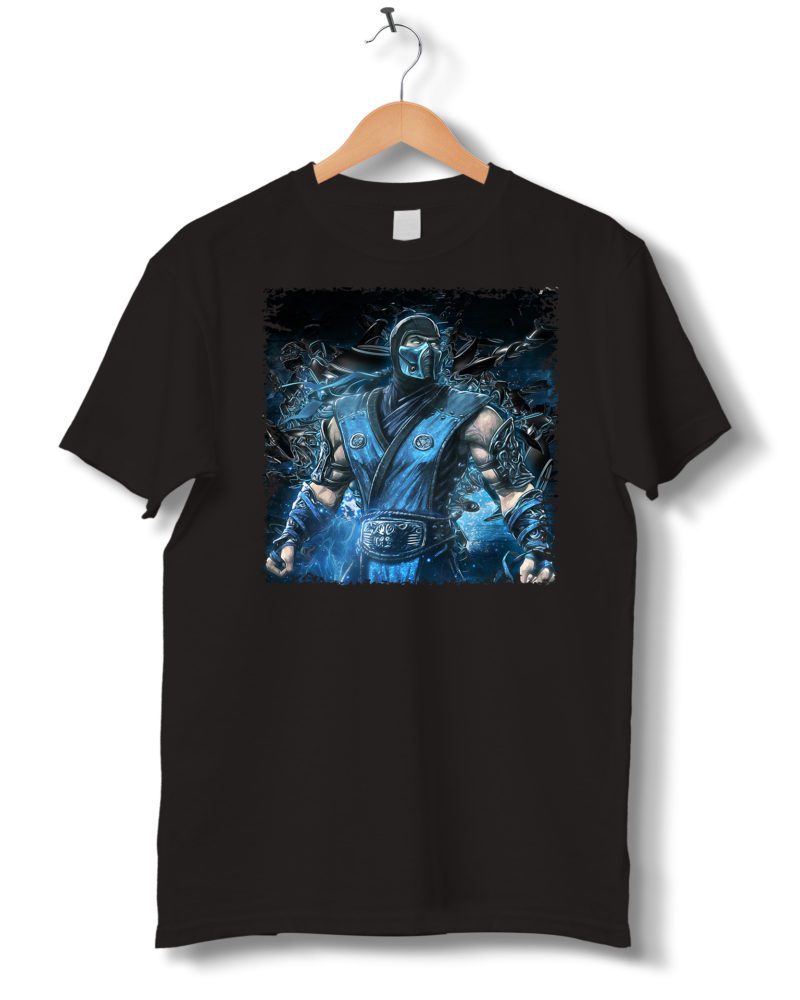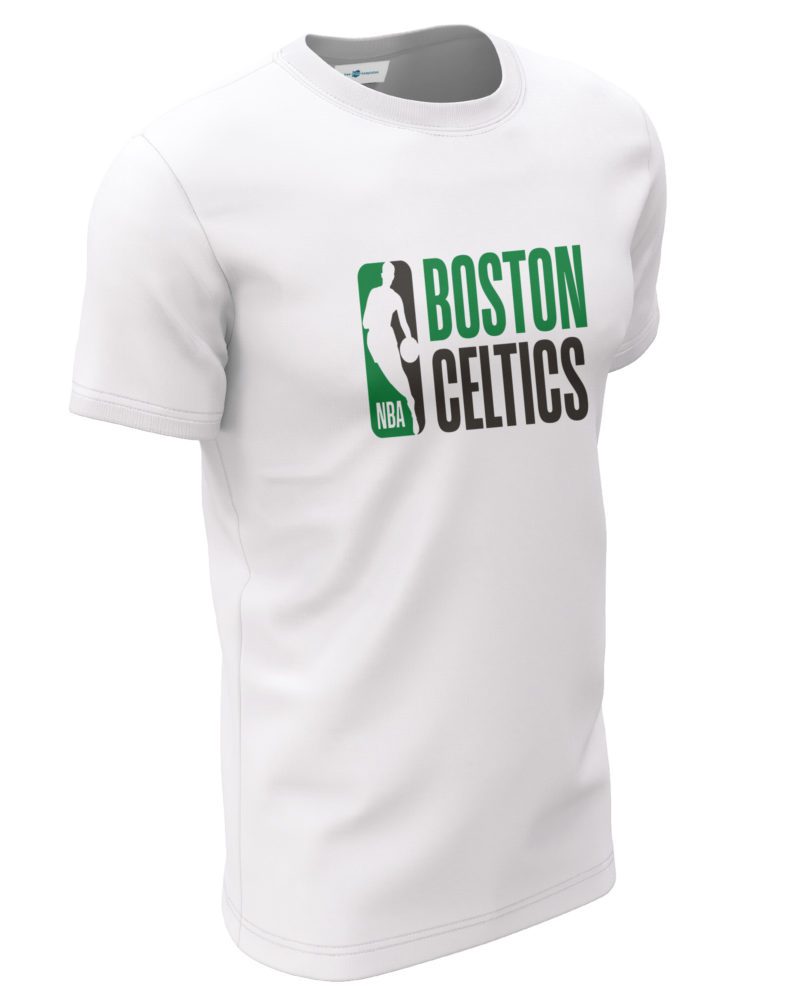Introduction to Starting a T-Shirt Business
Starting a t-shirt business can be a quick and easy process. With the help of online services such as Printful, it’s possible to have your own designs for sale within a few hours. The profit potential is high if your designs catch on and you build a strong brand. However, it’s important to note that achieving success takes a lot of hard work and dedication.
A t-shirt business is a great way to gain real-world experience as an entrepreneur. The cost of starting a t-shirt business can vary, but it’s a low-cost way to start a business and sharpen your business sense. It also allows you to get instant feedback from the market and see if your designs resonate with customers. Whether you’re looking to start a side business or a full-fledged empire, a t-shirt business can be a great way to gain experience and potentially make a profit.
Cost to Start a T-shirt Business
The cost can range from under $100 to over $50k. The cost will vary depending on whether you outsource your printing or buy the equipment to do it yourself.
For example, if you outsource your printing to Softee, you can start with just a few shirts.
Steps to Start a T-Shirt Business
Starting a t-shirt business can be a relatively straightforward process. Here are some key steps to consider:
Develop a business plan
This should include your target market, pricing strategy, projected costs and revenue.
When developing a business plan for a t-shirt business, it is important to include several key elements. The first of which is the executive summary. This section should provide a brief overview of the business, including the type of products offered and the target market. The executive summary should be concise and easy to understand, giving the reader a sense of the overall direction and goals of the company.

The next important element is market analysis. This section should include research on the t-shirt market, including information on the market size, trends, and competition. The market analysis will help you understand the industry’s current state and identify opportunities and potential challenges. It will also help you identify gaps in the market that you can fill with your t-shirt business.
Another crucial element is the target market. Identifying the specific group of customers you want to sell your t-shirts to, their demographics, needs, and behaviors. Understanding your target market will help you create designs and marketing campaigns that resonate with them and help you find the best channels to reach them.
A marketing and sales strategy is also essential to a business plan. Outline how you plan to promote and sell your t-shirts, including online and offline marketing strategies and pricing and distribution strategies. A clear and effective marketing and sales strategy will help you reach your target market and increase revenue.
Operations is another important aspect of a business plan. Describe your business’s operation, including production, inventory management, and logistics details. It’s essential to clearly understand your business’s operational aspects, as it will help you run the business efficiently and effectively.
Financial projections are also an important aspect of a business plan. Include financial projections such as income statements, balance sheets, and cash flow statements to understand the company’s financial health. Financial projections will help you understand your business’s financial viability and identify potential challenges.
Finally, the conclusion should summarize the key points of the business plan and provide an overview of the company’s future growth prospects. The conclusion should be written in a way that is easy to understand and leaves the reader with a positive impression of the company.
It’s also important to note that the business plan should be reviewed and updated regularly as it grows and evolves. It’s a good idea to seek guidance from experienced professionals, such as business advisors or consultants, to help ensure the business plan is thorough and well-written.
Research the market
Look into what other t-shirt businesses are doing, and identify any gaps in the market that you can fill.
Conducting market research is an important step in starting a t-shirt business. It helps you understand the industry’s current state, identify opportunities and potential challenges, and create a solid business plan. Here are some steps to follow when conducting market research for a t-shirt business:
- Define the scope of the research: Identify the specific questions you want to answer through your research, such as the size of the t-shirt market, consumer trends, and the competition.
- Gather data: Collect data from a variety of sources, such as industry reports, online market research tools, surveys, and interviews with industry experts. Make sure to gather both quantitative and qualitative data.
- Analyze the data: Look for patterns and trends in your collected data. Identify the strengths and weaknesses of the competition, and identify opportunities and potential challenges.
- Identify your target market: Use the data to identify the specific group of customers you want to sell your t-shirts to, their demographics, needs and behaviors.
- Assess your competition: Analyze the competition and identify their strengths and weaknesses. Look for gaps in the market that you can fill with your t-shirt business.
- Test your ideas: Conducting a small scale survey or focus group with your target market can help you validate your ideas and make sure they align with the market needs.
It’s important to remember that market research is an ongoing process, and it’s essential to stay up-to-date with industry trends and changes in consumer behavior. Regularly reviewing and updating your market research will help you to make informed decisions and adapt your business strategy as needed.
Additionally, you can also use tools such as Google Analytics, Google Adwords, SEMrush, and Ahrefs to research the most popular keywords and phrases for your niche, as well as your competitors’ online presence, which will help you to refine your strategy and make informed decisions about your business.
Choose a niche
Decide on the type of t-shirts you want to sell, such as vintage, graphic, or eco-friendly.
Choosing a niche for a t-shirt business is essential in standing out in a competitive market and reaching your target audience. One of the best ways to start is by identifying your interests and passions. Consider what you’re passionate about and what interests you, as this can inspire your designs and help you create a brand you’re excited about.
Think about what makes your t-shirts unique. Consider what sets your designs apart from those of your competition. It could be using a specific material, theme, style, or technique. A unique selling point (USP) will help you to stand out in the market and make it easier to attract your target audience.

Consider the scalability of your niche. Some niches may have a limited target market, while others may have a broader appeal. Consider how you can expand your niche to reach a wider audience. It might be through different designs, target groups, or marketing strategies.
Finally, test your niche before committing. A niche that sounds good on paper may not translate well in the real world. Test your ideas with a small-scale survey or focus group with your target market to see if your niche resonates with them. This will help you validate your ideas and ensure they align with the market needs.
Remember that choosing a niche is not a one-time process; you may need to adjust your strategy as your business grows and evolves. It’s crucial to stay up-to-date with industry trends and changes in consumer behavior and regularly review and update your niche to stay relevant and successful.
Design your t-shirts
Create unique and attractive designs that will appeal to your target market.
Coming up with unique and attractive designs that will appeal to your target market is crucial for success. Here are some ways to come up with t-shirt designs:
One way to generate ideas for t-shirt designs is to look to popular culture for inspiration. This can include following current trends in fashion, graphic design, and art. Keep an eye on popular movies, TV shows, and music, as well as social media and internet memes, to see what’s resonating with people.

Another way to generate ideas is to look to your personal experiences and interests. Think about your hobbies, travels, or personal history and how they can be translated into a design. You can also think about how you can communicate a message or tell a story with your designs.
You can also look for inspiration in historical and cultural references. Research different cultures, art movements, or historical periods and how they can be used to create unique designs.
You can also look to collaborate with other designers, illustrators, or artists. This can be a great way to bring different perspectives and skills to your designs and help you develop new ideas.
Finally, you can also use online tools such as Adobe Illustrator, Canva, or even Microsoft Paint to create your designs. These tools have a wide range of design elements that you can use, and you can also find many tutorials online to help you learn how to use them.

Remember that t-shirt designs reflect your brand, so it’s important to be consistent in your designs and to keep your target market in mind. Also, be open to feedback and testing your designs with potential customers, this will help you understand what works and what doesn’t and make necessary adjustments.
Source your products
Decide whether you want to print your t-shirts in-house or outsource the production to a third-party printer.
Printing shirts in-house can include purchasing your own printing equipment, such as screen printing presses or heat press machines, and printing the t-shirts yourself. This can be a good option for small-scale production and for having complete control over the printing process. However, it can be costly to purchase the equipment and may require some technical knowledge and experience to operate the machines.
Another option is to outsource the printing to a third-party printer. This can be a good option for larger-scale production and businesses that lack the technical expertise or equipment to print in-house. When outsourcing the printing to a third-party printer, it is essential to research different printers and compare their services, pricing, and turnaround times. One of the third-party printing companies that specialize in t-shirt printing is Softee. Softee is a company that offers a wide range of t-shirt printing services and has a good reputation for quality and customer service. They provide custom printing for t-shirts, hoodies, and more, with a wide range of printing methods, such as screen printing, heat press, embroidery, and more. They also offer a variety of apparel brands and materials to choose from, so you can find the perfect fit for your brand and your customers.

When outsourcing your t-shirt printing to a third-party printer like Softee, it is important to provide clear instructions and artwork for your designs and to communicate with the printer regarding any specific requirements you may have. It is also vital to consider lead times and turnaround times, especially when planning for events or promotions.
It’s important to evaluate the cost of production and inventory and any other expenses related to running the business to ensure that revenue is greater than the cost of doing business.
Create an online presence to market and sell your shirts
Creating an online presence is essential for a t-shirt business to promote products, reach target audiences, and increase sales. Here are some ways to create an online presence for a t-shirt business:
- Build a Website: Having a website is a must for any business in today’s digital age. It serves as a hub for all your online activities, where customers can find information about your products and company, place orders, and contact you. You can use website builders such as Wix, Shopify, or Squarespace to create a professional-looking website quickly and easily, even if you have no technical experience.
- Set up Social Media accounts: Social media platforms such as Facebook, Instagram, Twitter, and Pinterest are powerful tools for promoting your t-shirts and connecting with customers. Use these platforms to share images and information about your products and engage with your customers by responding to comments and messages.
- Use Online Advertising: Online advertising such as Google Adwords, Facebook Ads, and Instagram Ads can help you reach your target audience and drive traffic to your website. With the help of these platforms, you can create targeted ads that will only be shown to people who are most likely to be interested in your products.
- Optimize for Search engines: Optimizing your website and social media accounts for search engines such as Google and Bing can help you to increase visibility and attract more customers. This can include techniques such as keyword research, meta tags, and backlinking.
- Influencer Marketing: Partnering with influencers in your niche can help you to reach a wider audience and promote your t-shirts. Influencers can help you to create authentic and engaging content that will resonate with their followers.
- Email Marketing: Building an email list is a powerful way to reach customers and promote your t-shirts. Use email marketing tools such as Mailchimp, Constant Contact, or Aweber to create and send targeted email campaigns to your customers.

It’s essential to keep in mind that creating an online presence is an ongoing process and requires regular maintenance and updates. It’s essential to stay up-to-date with the latest trends and best practices to ensure your online presence is compelling and engaging.
Continuously improve your business
Continuously evaluate your progress, consider what works and doesn’t, and adjust your strategy accordingly.
It’s worth noting that there are many different ways to start a t-shirt business, so it’s important to do your own research and figure out what approach will work best for you.
Starting a t-shirt business can be a rewarding and challenging endeavor. However, with the right approach, it is possible to build a successful business.










